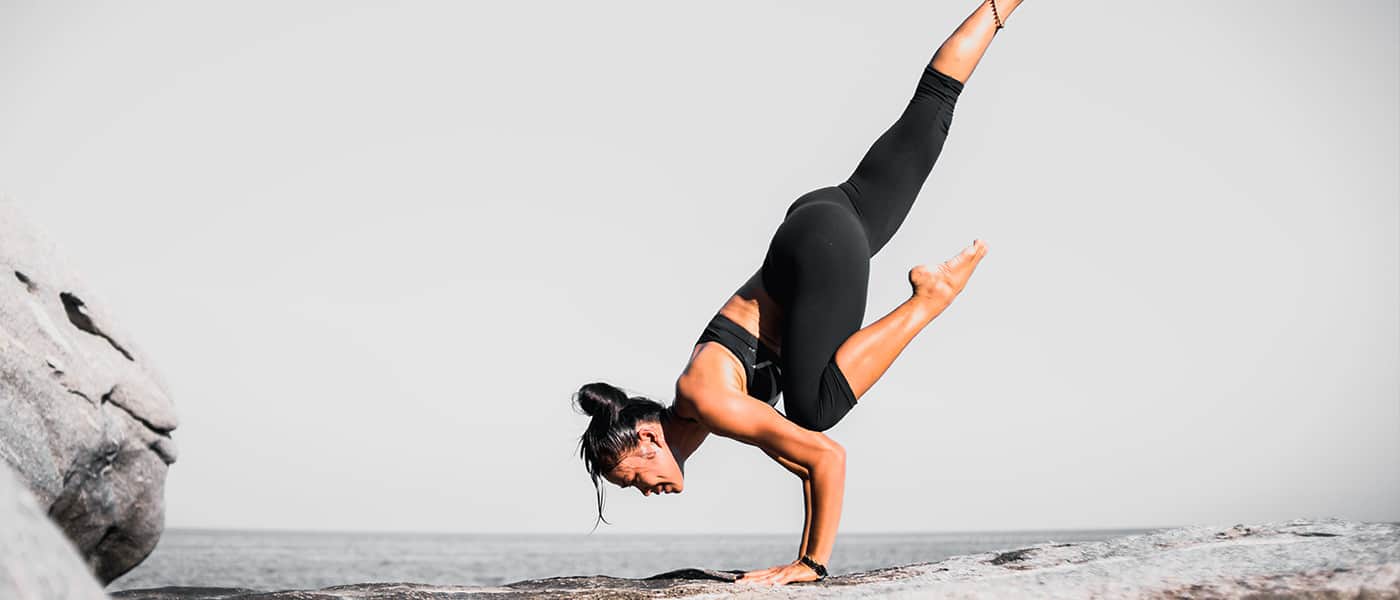devaduuta panna asana or fallen angel pose

How to devaduuta panna asana
Squat with legs together on your tiptoes, fully extending your arms up. Draw fingertips together, bend elbows wide. Exhale, placing your left upper arm (triceps muscles) on the outside of your right thigh. Keep your knees together, breathe into the twist.
Take parsva bakasana by placing both palms on the floor, shoulder distance apart, fingers wide pointing away from and perpendicular to your toes. Seal the connection of your leg, torso and arm. Lean into your hands, draw your chest forward and your shoulders away from the floor. Begin bearing weight on your arms. Continue leaning forward. Let that action lift your feet off the ground. Wrists and elbows remain in line, both your forearms become perpendicular to the floor, and your hips are in the air.
Turn your head to look left, bend your elbows slowly and gently place your right temple on the floor. Note that you are simply touching the floor not transferring weight there! Straighten your left leg, pointing your toes to the sky as you draw your right toes to your left knee. Savor the sweet blend of strength and lightness. To unwind the pose, return to parsva bakasana, then return to the tiptoe balance.
Embrace the possibility of the second side!
Who
My yoga practice took flight when I lived in London and studied with rebel Sivananda yogis and Tripsichore Yoga. The unlikely environment of a dimly lit, carpeted basement of the Indian cultural center deep in West London proved fertile ground indeed. In the company of other inspiring yogis, my practice welcomed freshness, vitality and inquiry. How might poses evolve if constraints drop, if traditional sequencing gives way to lyrical creativity?
Though I ground my practice and teaching in the eloquent structure created by BKS Iyengar, I actively encourage creative interpretation. I bring this essence to each class I teach and each student I encounter. I teach to ignite possibility in students; to encourage skillful action in a fluid body and to cultivate a compassionate heart. By staying open to possibilities in practice, allowing asana to flower and the breath to flow, we may find the sweet taste of santosha and take that into life.
Why
Fallen Angel, created by Edward Clark of Tripsichore, fuses my love of arm balances and innovation and adds beauty to practice. Think of it as giving parsva bakasana flight, height and grace. Helping students to discover this pose, sometimes with laughter and awe, is a treasure.
Arm balances cultivate discipline, tenacity, deep body awareness, laser like focus and a steady, calm mind — the essence of shtira sukha asanam. Fallen Angel develops an ability to deeply twist and strengthens arms and shoulders. Preparatory poses should include twists, forward bends, arm balances such as bakasana and galavasana, and movements to relax the neck and stretch the wrists.
Read next >> yoga month challenge #trueyoga